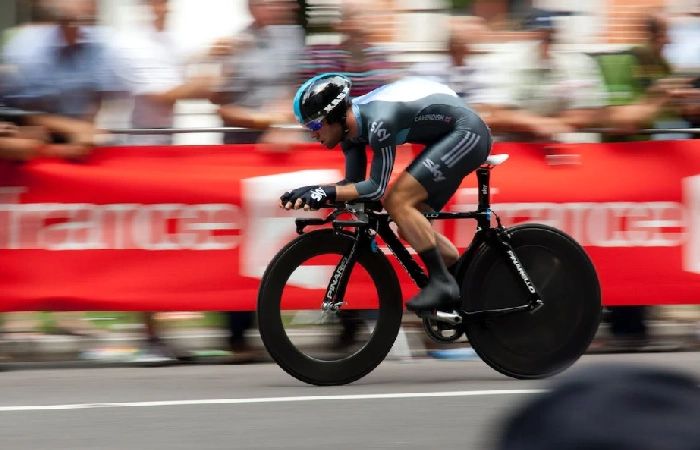8 Fat Loss Strategies For Athletes – Are you an athlete seeking optimal performance through effective fat-loss strategies? Your body composition significantly impacts strength, agility, and endurance. According to recent studies, managing fat percentage is linked to improved athletic performance, reducing the risk of injury and promoting overall efficiency.
From precision in macronutrient ratios to strategic training protocols, each recommendation is grounded in factual insights to guide you toward sustainable and performance-driven fat loss. Read on to shed excess fat while preserving lean muscle mass now!
Table of Contents
What is Athlete-Specific Fat Loss?
Athlete-specific fat loss refers to a targeted approach to optimize body composition for individuals engaged in athletic pursuits. Unlike generic weight loss, this strategy is tailored to the unique demands of sports performance.
Athletes must carefully balance reducing body fat for enhanced agility and preserving lean muscle mass for strength and power. The focus extends beyond calorie restriction, encompassing precise macronutrient ratios, strategic meal timing, and specialized training protocols.
Fat loss for athletes recognizes the interconnectedness of nutrition, training, recovery, and sleep, aligning these elements to achieve the body composition most conducive to peak athletic performance.
Top 8 Fat Loss Tips for Athletes
Optimizing fat loss for athletes involves a multifaceted approach. From careful nutrition planning to strategic training, these eight tips are tailored for sustained fat loss while supporting peak athletic performance.
1. Precision in Macronutrient Ratios
Balancing carbohydrate, protein, and fat intake to meet your training regimen’s specific demands is key. Carbohydrates provide the required energy for intense workouts, proteins aid muscle repair and maintenance, and fats contribute to overall health.
The recommended ratio varies based on individual needs, training intensity, and sport type. Fine-tuning these macronutrient proportions ensures that athletes fuel their bodies efficiently, supporting fat loss while preserving essential muscle mass.
2. Strategic Meal Timing
Eating strategically before and after workouts enhances nutrient absorption and utilization, supporting performance and muscle preservation.
Timing carbohydrate intake around training sessions aids in glycogen replenishment, which is imperative to maintaining energy during high-intensity efforts. Post-workout protein intake facilitates muscle protein synthesis, contributing to recovery and fat loss.
Spacing meals throughout the day promotes metabolic stability and regulates hunger, which is essential to both long-term and immediate athlete-specific fat loss goals.
3. Hydration for Optimal Performance
Staying fully hydrated supports metabolic processes, aiding in the breakdown and utilization of stored fats. Water intake is critical to thermoregulation during exercise, preventing dehydration-related performance declines.
Staying well-hydrated supports cellular function and nutrient transport, facilitating the body’s energy utilization. Athletes should tailor their fluid intake to individual needs, considering climate, training intensity, and body composition goals.
4. High-Intensity Interval Training (HIIT)
This training method includes alternating short bursts of intense exercise with intervals of rest or lower-intensity activity. HIIT elevates the heart rate and metabolic rate, promoting efficient calorie burning during and after workouts.
Studies indicate that HIIT can enhance fat oxidation, improve cardiovascular health, and preserve lean muscle mass—all vital elements of athlete-specific fat loss.
5. Incorporating Strength Training

Unlike cardio-centric approaches, strength training preserves and builds lean muscle mass, contributing to an elevated resting metabolic rate.
As athletes engage in resistance exercises, they stimulate muscle growth and enhance overall body composition. The afterburn effect of strength training leads to continued calorie expenditure post-workout, supporting fat loss efforts.
6. Periodization for Fat Loss
This strategic approach prevents plateaus and accommodates the body’s adaptive responses. By incorporating phases of high-intensity workouts, moderate training, and recovery periods, you can optimize fat loss while minimizing the risk of overtraining and injuries.
Periodization aligns with the body’s natural cycles and enhances overall performance, making it a crucial element in athlete-specific fat loss programs. Adjusting training variables over time ensures continuous progress toward body composition goals.
7. Prioritizing Quality Sleep
During sleep, the body undergoes crucial processes such as hormone regulation, muscle repair, and metabolic function. Inadequate sleep can disrupt these processes, leading to hormonal imbalances that hinder fat loss.
Quality sleep positively impacts leptin and ghrelin, hormones controlling hunger and satiety. Those aiming for an ideal body composition should prioritize sufficient and restorative sleep, recognizing its direct influence on metabolic health, recovery, and overall well-being.
8. Mindful Eating Practices
Mindful eating practices are integral to athlete-specific fat loss. By cultivating awareness during meals, athletes can better regulate portion sizes and avoid overconsumption.
Examples of mindful eating include paying attention to hunger cues, savoring each bite, and recognizing when one is satisfied. This approach creates a healthy relationship with food, promoting better digestion and nutrient absorption.
Athletes incorporating mindful eating practices into their routine can improve overall dietary habits, supporting sustainable fat loss while maintaining the energy levels necessary for peak performance in their respective sports.
The Takeaway
Optimizing fat loss for athletes requires a comprehensive and tailored approach. The eight strategies outlined, from precision in macronutrient ratios to strategic training and recovery practices, form a cohesive framework for results on an ongoing basis.
Recognizing the intricate interplay between nutrition, exercise, and lifestyle factors is paramount. Athletes should leverage the power of high-intensity interval training (HIIT), strength training, and periodization to fine-tune their body composition. Quality sleep, hydration, and mindful eating further complement these efforts.
While these tips can help athletes, the guidance of a healthcare professional is invaluable. Doctors can evaluate your health overall and identify root causes of issues that might be interfering with your fat loss efforts. They can also help you find treatments that can help you safely achieve your goals, such as enclomiphene therapy to help raise low testosterone levels in men.

